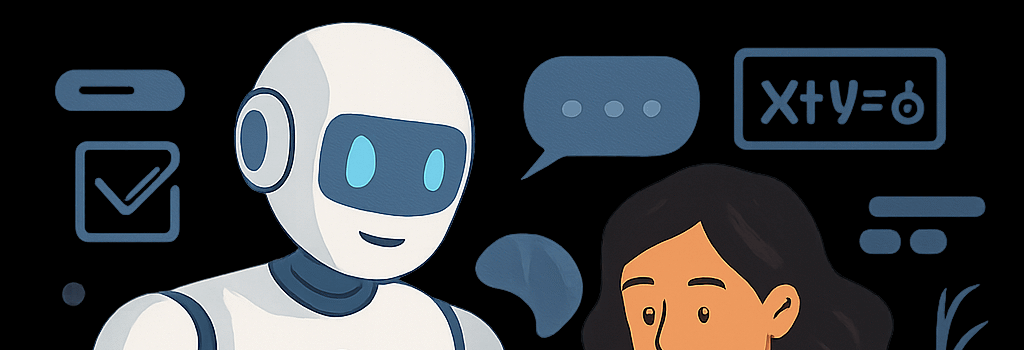ChatGPT’s Enhanced Study Mode: AI Tutoring Insights

The evolution of large language models (LLMs) has sparked both excitement and concern in educational circles. Critics warn of widespread academic dishonesty, while proponents highlight the potential for personalized learning. OpenAI’s new Study Mode represents a significant step toward transforming ChatGPT from an answer generator into an interactive, scaffolded tutor that promotes deeper understanding.
Overview of Study Mode
Study Mode is not a new underlying model but a collection of custom system instructions carefully crafted in collaboration with educators, cognitive scientists, and pedagogy experts. These instructions guide the LLM to:
- Deliver content incrementally through a scaffolded structure
- Pose Socratic questions to engage critical thinking
- Insert periodic knowledge checks with personalized feedback
By pausing at strategic points, Study Mode ensures learners assimilate each concept before advancing, reducing cognitive overload and encouraging active participation.
Pedagogical Framework
In designing Study Mode, OpenAI adopted principles from:
- Constructivist learning theory where learners build new knowledge upon prior understanding
- Scaffolded instruction that supports students progressively until independence
- Formative assessment via regular checkpoints and adaptive prompts
“We provided the model with golden examples of expert tutoring interactions and iteratively refined prompts based on educator feedback,” explained an OpenAI pedagogy consultant.
Technical Architecture and Implementation
Study Mode leverages the GPT-4 architecture with the following enhancements:
- Chained prompting to maintain context across multiple turns and ensure logical progression
- Retrieval-augmented generation using vector embeddings to fetch up-to-date factual information from a curated knowledge base
- Token budgeting optimized for interactive sessions by chunking content into sub-500 token segments
- Dynamic temperature and top-p control to balance creativity and precision during Socratic questioning
OpenAI’s internal benchmarks indicate that this configuration reduces hallucination rates by up to 30 percent compared to standard chat settings.
Comparative Analysis with Other AI Tutors
Several AI-driven study aids have emerged in the past year. Here is how Study Mode compares:
| Feature | Study Mode | Competitor A | Competitor B |
|---|---|---|---|
| Socratic Engagement | Yes | No | Limited |
| Retrieval Augmentation | Curated KB | Open Web | None |
| Formative Checks | Built-in | Plugin Required | Not Supported |
| Custom System Prompts | Expert-Curated | User-Generated | Static |
Unlike one-size-fits-all tools, Study Mode’s integration of expert-vetted prompts and real-time feedback positions it as a frontrunner in AI-enabled learning.
Integration in Educational Settings
OpenAI plans to roll out Study Mode across its ChatGPT Edu platform within weeks. Early adopter institutions on Azure AI for Education have reported:
- 30 percent increase in student engagement during virtual office hours
- Significant drop in “answer dumping” on homework forums
- Positive student testimonials citing reduced anxiety and greater confidence
In one pilot at the University of California system, professors observed that students using Study Mode demonstrated a 20 percent improvement in concept retention over traditional AI chat interfaces.
Expert Opinions and User Feedback
“Study Mode feels like having a dedicated teaching assistant who never tires,” commented Dr. Amanda Liu, a cognitive psychologist at MIT. “The Socratic prompts encourage metacognition, which is crucial for long-term learning.”
Students, too, praise the flexibility. One undergrad reported completing a multi-hour polymer chemistry review session at 2 a m without feeling judged or rushed.
Future Directions and Challenges
Looking ahead, OpenAI and academic partners are exploring:
- Multimodal Study Mode that incorporates visual aids, diagrams, and video explanations via GPT-4o Vision
- Voice-enabled tutoring leveraging Whisper for pronunciation and oral comprehension exercises
- Adaptive difficulty scaling driven by real-time learner analytics and spaced repetition algorithms
However, challenges remain. Reducing residual hallucinations, ensuring equitable access in low-bandwidth regions, and safeguarding student data privacy under FERPA and GDPR are top priorities for the next development cycle.
Conclusion
ChatGPT’s Study Mode marks a pivotal advancement in AI-assisted education. By embedding pedagogical best practices directly into the model’s instruction set and coupling them with robust technical enhancements, OpenAI is redefining how students interact with LLMs. As integration expands and multimodal capabilities arrive, the boundary between traditional tutoring and AI-driven instruction will continue to blur.